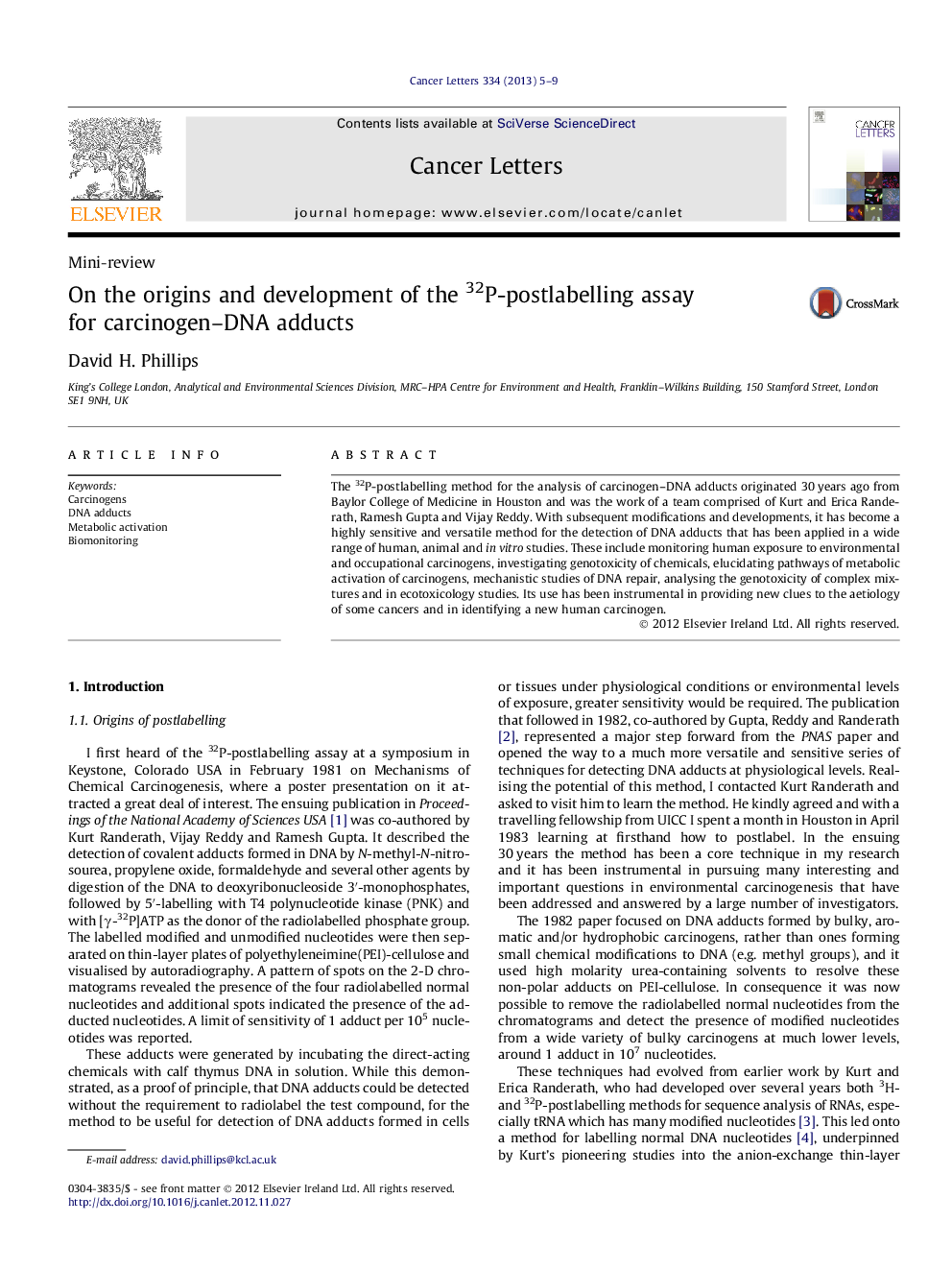| کد مقاله | کد نشریه | سال انتشار | مقاله انگلیسی | نسخه تمام متن |
|---|---|---|---|---|
| 2112980 | 1084432 | 2013 | 5 صفحه PDF | دانلود رایگان |

The 32P-postlabelling method for the analysis of carcinogen–DNA adducts originated 30 years ago from Baylor College of Medicine in Houston and was the work of a team comprised of Kurt and Erica Randerath, Ramesh Gupta and Vijay Reddy. With subsequent modifications and developments, it has become a highly sensitive and versatile method for the detection of DNA adducts that has been applied in a wide range of human, animal and in vitro studies. These include monitoring human exposure to environmental and occupational carcinogens, investigating genotoxicity of chemicals, elucidating pathways of metabolic activation of carcinogens, mechanistic studies of DNA repair, analysing the genotoxicity of complex mixtures and in ecotoxicology studies. Its use has been instrumental in providing new clues to the aetiology of some cancers and in identifying a new human carcinogen.
► 32P-Postalbelling is an ultrasensitive method for detection of carcinogen-DNA adducts.
► It is widely applied to diverse types of DNA lesions of endogenous and exogenous origin.
► It is useful for investigating mechanisms of carcinogenesis.
► It is useful for monitoring human exposure to carcinogens and investigating the aetiology of cancer.
Journal: Cancer Letters - Volume 334, Issue 1, 28 June 2013, Pages 5–9